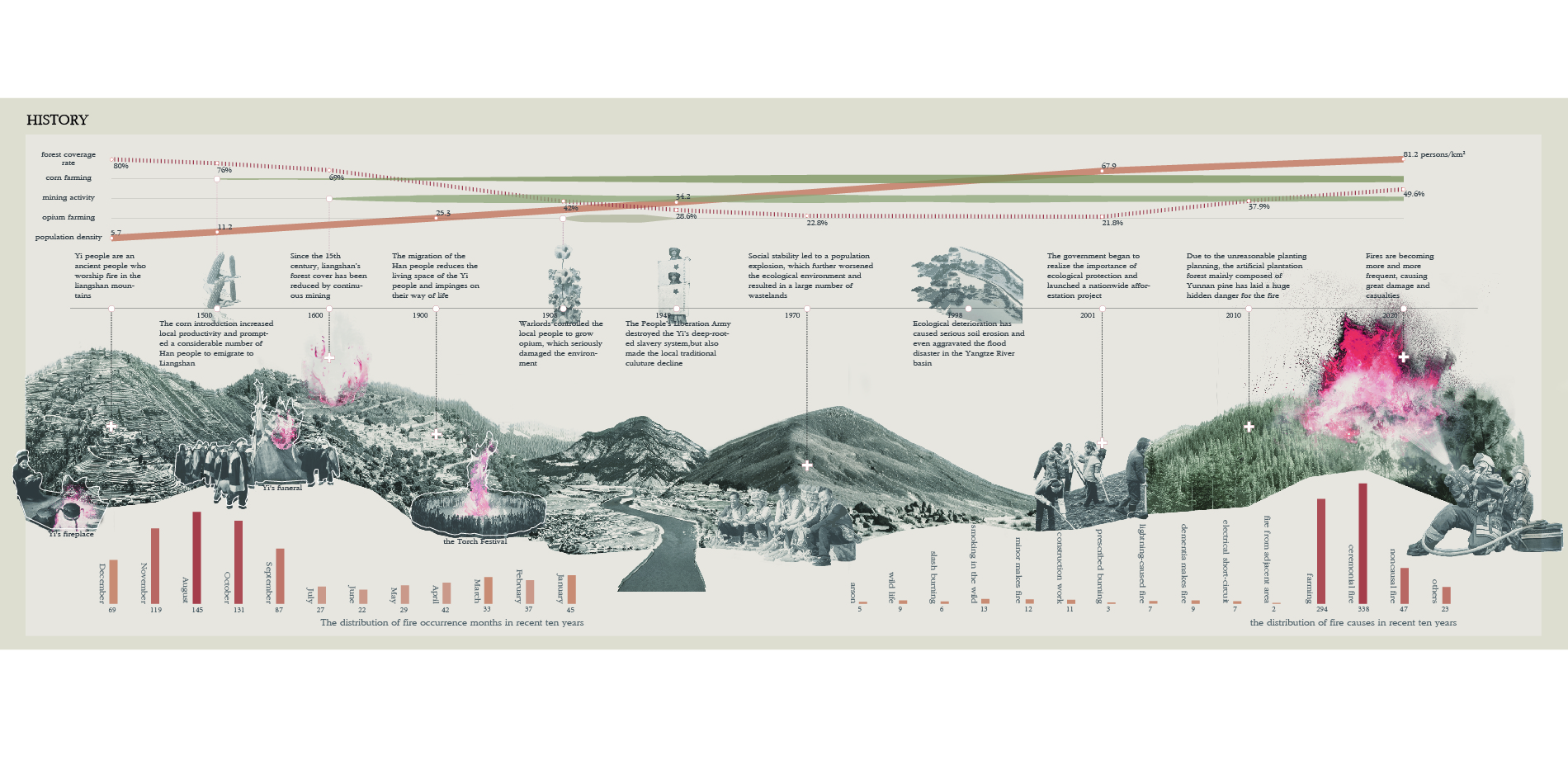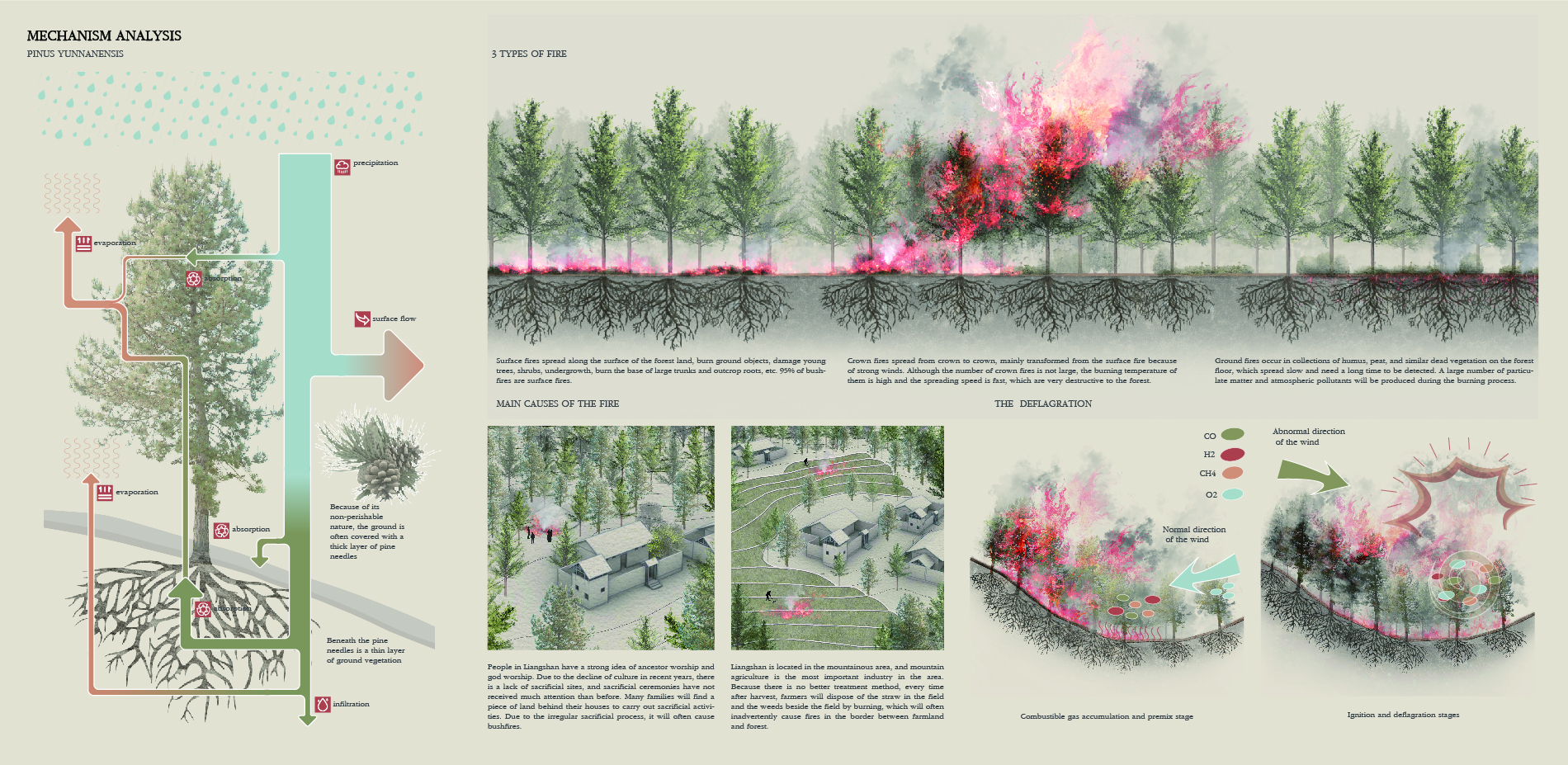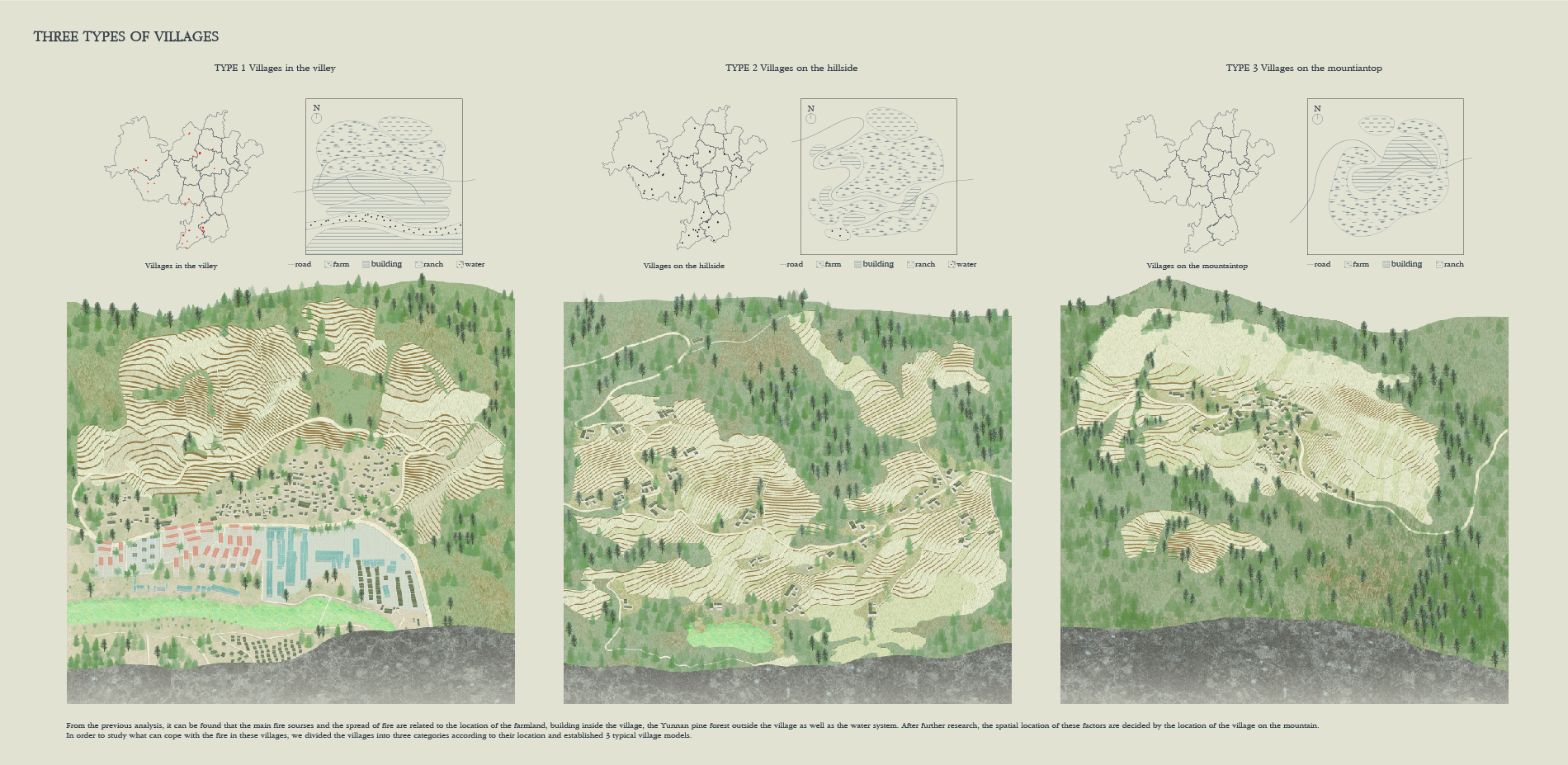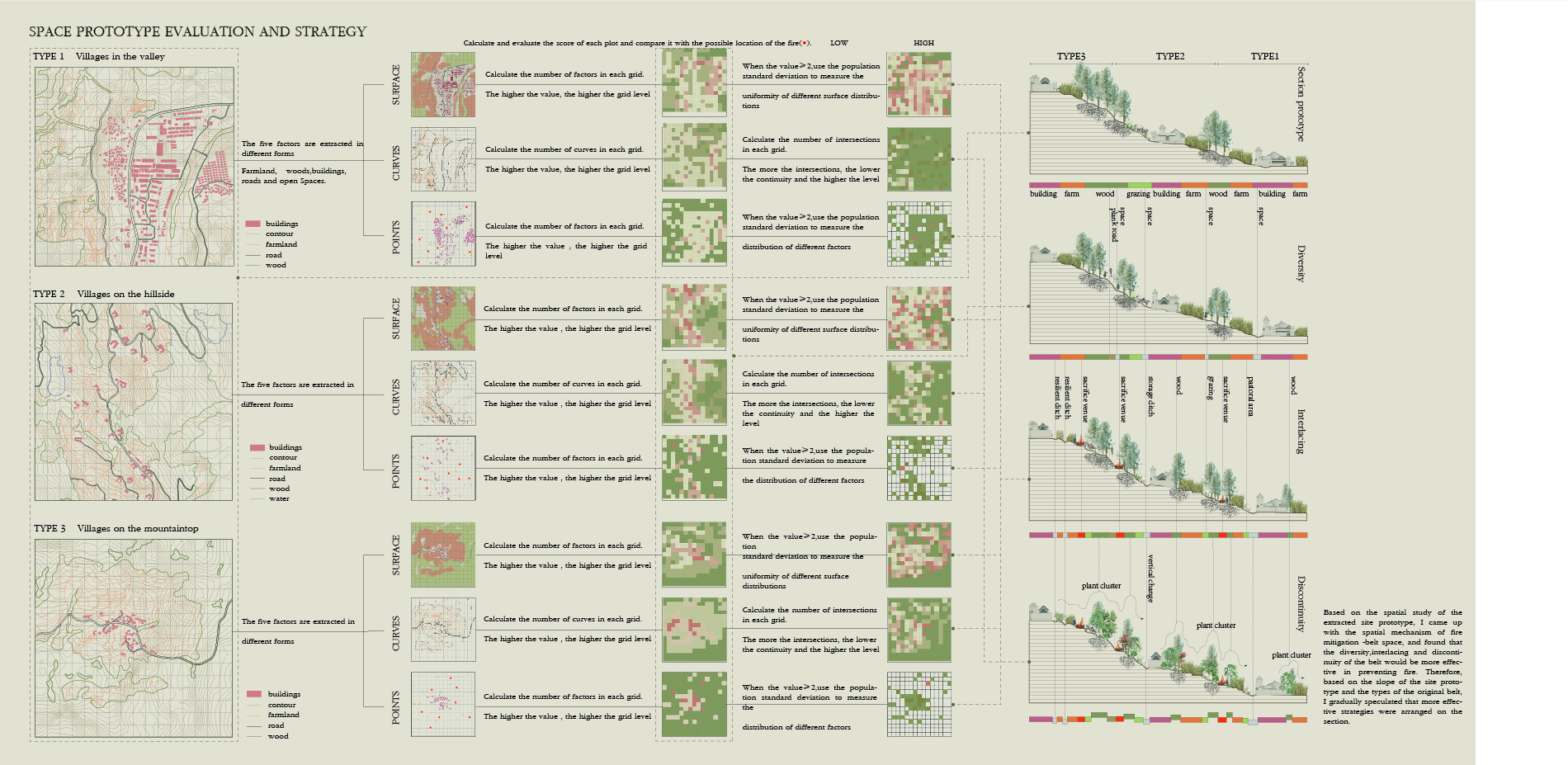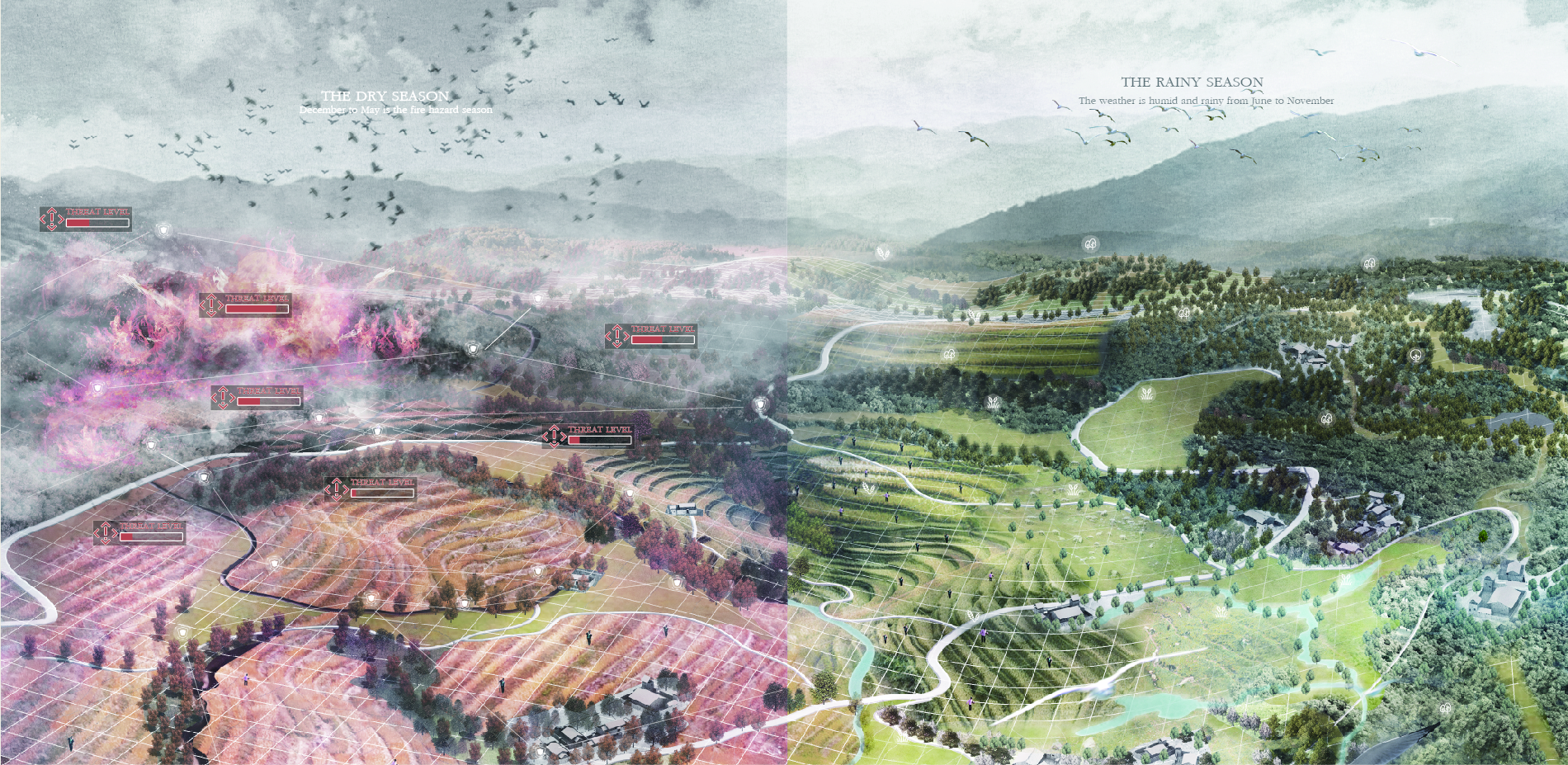Forest, Human, Fire
Honor Award
Analysis and Planning
Liangshan, Sichuan Province, China
Junyao Ren; Xin Liu; Zifan Wang
Faculty Advisors: Xinqi Zhuang
Huazhong Agricultural University,China
This project moved through the analysis phases and proposed traditional fire-mitigation strategies for the Liangshan Yi Autonomous Prefecture in Sichuan Province. Their cohesive approach to making the different drawings come together draws upon a 1915 survey of landscape history. They adopted an interesting style to show their analysis; a hybrid of representation that makes complex information accessible. The representation becomes really important to making the proposal legible—that’s where the magic is.
- 2021 Awards Jury
Project Statement
This project aims to use belt spaces to protect Yi villages from wildfires in Liangshan Yi Autonomous Prefecture while preserve their life culture. Yi people believe in fire. Fire has always been the first necessity of their life. But when their life style combines with a large areas of the Yunnan Pine forest and complex environment in Liangshan Yi Autonomous Prefecture, they become the biggest potential wildfire threat. The immigration helps them away from the fire, while their belief in fire has gradually been being far away from their life.
The belt spaces summarized from 3 types of villages break the continuity vertically, increase spaces diversity and increase interlacing of different spaces. They can prevent the spread of wildfires and isolate the fire as a sacrifice place, a fruit garden, a road and etc.. Yi people can live with the fire safely through transforming their villages minimally.
Project Narrative
Liangshan Yi Autonomous Prefecture in Sichuan Province is the largest settlement of Yi people in China. And Yi people is a typical mountain tribe. Their life is closely related to the mountains, forests and fire.
The forest was invaded by opium poppies and destroyed by mining during the development of human civilization. The government took measures like aerial seeding to reforest. These artificial Yunnan Pine forests brought high forest coverage for Liangshan but also became the biggest fire hazard. Yunnan pine has a high content of turpentine and a low ignition point, which is like a piece of wood in pure oxygen in Liangshan. It can burn and explode with a single ignition.
And Yi people's belief in fire has gradually been being far away from their life because of the integration with other cultures.
The project aims to prevent Yi villages from wildfire and preserve their culture by the local landscape language.
Strategy
Firstly, we got a potential fire danger grade map by overlaying and analyzing the factors related to forest fires. And it can be verified by the fire information from government in recent years. After excluding the villages within the 20km service range of the fire station, we found 102 villages in the medium and high-risk areas.
The locations of these villages have great influence on their spatial structures according to Yi people’s lifestyles. Thus, we picked up 3 typical villages respectively are in the valley, on the hillside and on the mountaintop and analyzed their spatial structures from 5 factors: roads, farmland, buildings, forests and open spaces. The diversity, interlace and discontinuity of these factors may have a great relationship with preventing the occurrence of fire and the further spread of hill fire according to landscape ecology.
Then we divide the site into grids, and abstract these 5 factors into points, lines and surfaces in the grid, and score each grid. The more each factor in the grid, the higher the value.
And for the surface (and the point), when the value is greater than or equal to 2, the smaller the standard deviation of the area of different factors, the higher the grid score. It means that the factors are more homogeneous.
For the curve, when the number of factors in the grid is the same, the more line segments in the grid, the stronger the interlace and the higher the grid score. Compare the number of intersections of different factors in the grid. The greater the number of intersections, the lower the continuity and the higher the score.
Finally, the design language and strategies for these "belt" are derived based on the scores. They respectively are
1. Adding diversified spaces, enriching the diversity of space factors to alleviate the spread of fire.
2. Adding rainwater ditches, sacrificial trails, pastures, pastoral areas, etc. while combined with the original woodland and housing area to increase the interlace. Ditches are used to accumulate rainwater, and sacrificial trails are set up to standardize villagers' traditional sacrificial activities to ensure the safety of fire.
3. Break the vertical continuity of the canopy through the arrangement of different plant clusters such as farmland, fruit forest and pasture. Prevent the spread of fire when it occurs, and at the same time, fruit forests and pastures can increase the income of villagers.
We used our strategies in Minzhu Village based on its characteristics to reduce the occurrence of fires and prevent the spread of fires, and preserve the traditional activities of the Yi people. The village is thereby intertwined with the history and culture of Yi people.
Plant List:
- yunnan pine
